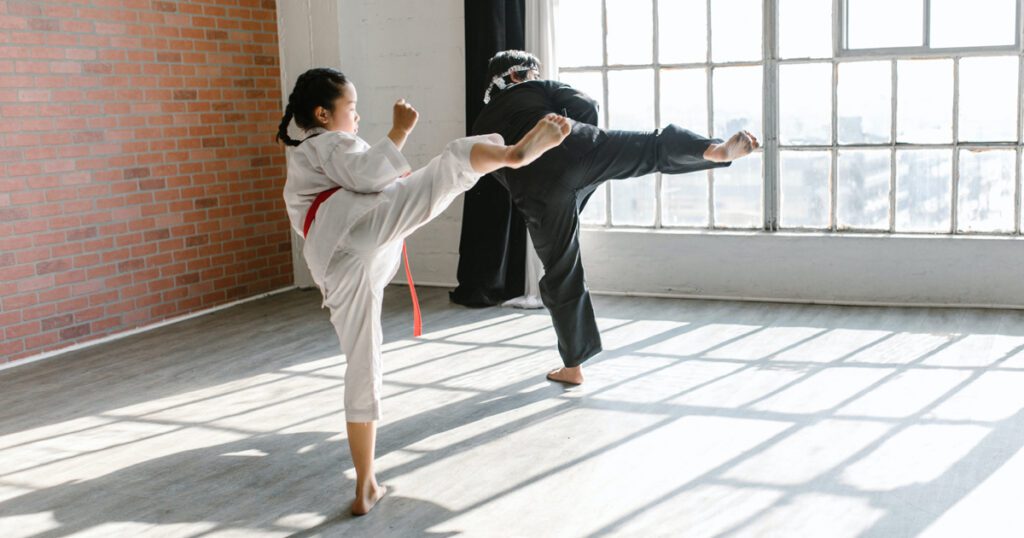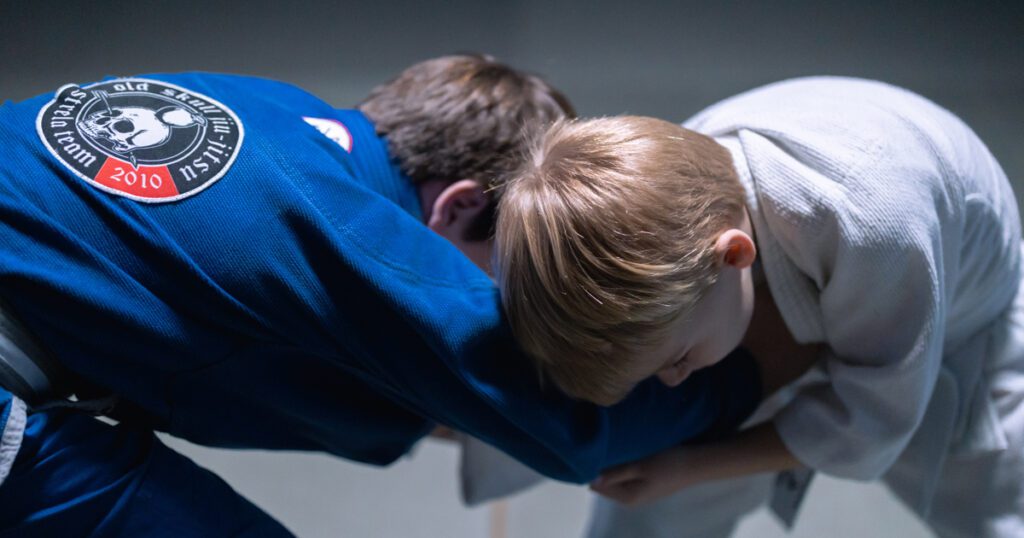Teaching children martial arts, in many ways, is similar to teaching them anything else. You have to appeal to their learning style, take into consideration their strengths and weaknesses and, most importantly, make sure that they are having fun.
If you have previous experience of teaching any martial arts to adults, you should know teaching children is a completely different ball game. Children have a much shorter attention span than adults and also differ both psychologically and physically. Just because you are a good coach to adults does not necessarily mean you will succeed with children.
Perhaps you are just looking into the possibility of becoming a martial arts teacher for the first time and have no experience in teaching either adults or children? If so, you may be at an advantage as you will come into this new experience with no pre-conceived ideas.
Do You Need a Black Belt to Teach Martial Arts?
Belt rankings are purely symbolic and there are no limitations on who can and cannot teach martial arts based on belt alone. However, regardless of belts, to instruct a class you should have a good amount of knowledge of the martial art you are teaching and it is reasonable to expect that you would hold a black (or another high ranking) belt.
Holding a black belt will instantly make you more credible, not just to the children you are teaching but also to the parents who are paying for your services (more on parents later). A black belt adds a layer of credibility and, through that, authority to command the session.
If you do not hold a black belt, all is not lost as you can still teach (like many do) without one. You should ideally hold a higher ranking than your students, therefore (at least in theory) holding more knowledge and experience.
Should you wish to move into teaching martial arts, whether with or without a black belt, you may wish to consider becoming a sub-instructor working under another (ideally higher ranked) teacher for you to learn from. You, yourself, could be a very good teacher and excel in classes and competitions, but teaching is a skill in itself – so assisting before going straight in as a lead instructor does make for a sensible pathway.

What Does Martial Arts Teach a Child?
Martial arts teaches children important values such as motivation, discipline and respect, as well as how to defend themselves should the need ever arise. It is also a great form of exercise with those practicing martial arts often performing routines in short, highly intense, bursts. While other sports may rank higher in terms of popularity, few will provide children with an all-around workout quite like martial arts will.
There are many stories of children who struggle with discipline enrolling into martial arts and coming out better for the experience. This is because martial arts provides structure and an outlet for children to channel excess energy and any anger they may have into something positive.
With that, martial arts teaches children how to deal with challenges that they may and will face and how to resolve conflicts. By providing children with these skills, it also serves to improve their self-confidence which, for some children, comes easier for some than it does for others.
Catering to Children’s Needs
Children have different needs to adults and, as an instructor, you are responsible for meeting those needs. It is a fact that children are faster learners than adults and, because of that, can quickly grasp new ideas and concepts. However, that does also mean that they can more easily become frustrated when they struggle – for example, with a new move or routine.
As already touched upon, children are unlikely to have the same level of self-confidence as an adult might. This means that they may not be as forthcoming to ask questions in front of the class when they are struggling (and it also means that digging them out in front of their peers can do more bad than good). You will have to be observant when teaching and know when and how to approach your students, recognising when they are struggling and providing them with additional guidance.
Younger age groups have far less control over their emotions than teenagers and much less than adults, so make sure to always be aware of this. Something that you may consider to be a throwaway comment can easily eat away at your student
No two children are the same, so there is not any hard and fast rule as to how to approach such situations, but you should always approach with some degree of sensitivity (particularly in the case of young children). Don’t focus too heavily on what it is they are doing wrong, but praise them for what they are succeeding with and offer guidance on how to improve. Positive reinforcement goes a lot further than simply saying when they aren’t doing something right.
Attention and Validation
As children’s attention spans are shorter, you will need to give them more hands-on attention. That means mucking in as you deliver your session and doing the reps with your students. Demonstrating your martial art routines in front of the class and expecting them to follow along is all well and good, only that it’s not.
Firstly, stop and remember that the children in your class will have just spent six hours listening to teachers. They don’t want to do the same thing for an hour in the evening. You will have far more joy as a practical instructor, guiding your students through each rep and technique and, through this, you will keep their attention for longer and, crucially, they will have a lot more fun doing so.
Validation is key for children. As adults, we like being told when we are doing something well and receiving recognition and it is all the more important for little ones. Make sure to tell them when they are succeeding and recognise their achievements.
It isn’t just the reward of the next coloured belt that is utilised as a means of recognising achievement and progress when it comes to martial arts, but also certificates, awards and trophies. If you are putting your students through their belt grades, recognition such as this can be a good way of keeping them interested, considering that it is normal to wait between four and six months between each belt level.

Physical Differences
When it comes to children’s physical differences, you should consider the disparities between adults and children, as well as between the children in your class. Children are naturally more flexible than adults and, thus, won’t require as long a time to stretch at the start of the session as a class of adults would.
Additionally, children are still growing and there will be times when they suddenly go through a growth spurt. This can mean that they may find certain movements and techniques more difficult than they previously did, which could make them feel as though they are going backwards and not progressing. As their instructor, this is when you will have to reassure them. During times of rapid growth, this is when children’s bodies are more susceptible to aches (growing pains) and this should be monitored and you should never force a child to continue through pain.
When it comes to physical differences from child to child, it is important to remember that children develop and grow at different rates. Not only do you need to keep this in mind in terms of development with their martial arts, but also remain mindful not to make a thing of any physical differences as children may be self-conscious.
Parents and Guardians
While it is the children in your class that should always have your attention, you should also keep in mind that you need to keep parents and guardians happy. They will be the ones paying for your services, so ensuring that they are impressed with your sessions and maintaining a positive relationship is important.
There will be times when parents/guardians ask questions about your sessions and, while this may feel like an unfair criticism, they may well just be curious (they have a right to take an interest in what their children are doing). Allow time both before and after the session for parents/guardians to speak to you, especially for newcomers to put them at ease.
Making yourself approachable to both the children in your class and parents/guardians will go a long way to retaining students, as well as building a good reputation and gaining new students.
In Conclusion
When it comes to learning how to teach kids martial arts, the truth is that you will be learning on the job. Nothing beats first-hand experience and as you plan and deliver more classes, you will become a better instructor.
As long as you keep your students interested, engaged and motivated with plenty of encouragement and rewards, such as the awards and trophies available to buy from Fen Regis Trophies, you won’t go far wrong. For more information on our awards and trophies, please get in contact with a member of our friendly team today.